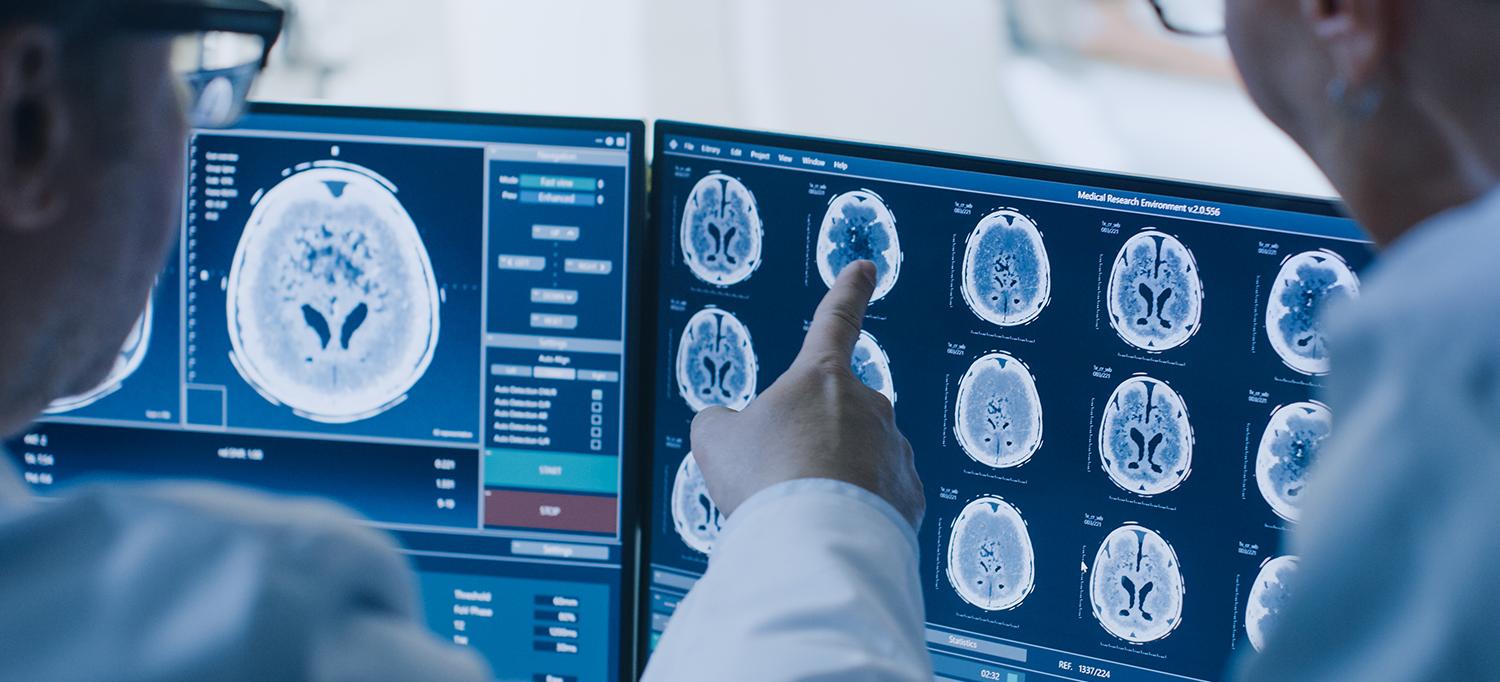
After surviving a cardiac arrest incident, a young patient was diagnosed with an anoxic brain injury. A multidisciplinary team at Rusk Rehabilitation worked closely with the patient to restore function and support her transition to post-discharge life.
Photo: Gorodenkoff/Getty
After weeks in the intensive care unit (ICU), a 27-year-old woman was unable to control her limbs, speak, or swallow. Restoring these functions—while managing mental health issues that emerged during rehabilitation—required coordinating treatments across a broad range of disciplines.
A Catastrophic Loss of Oxygen
The patient was visiting New York City from Seattle for a conference in November 2018 when she grabbed her chest, collapsed, and lost consciousness. Bystanders called 911, and an EMS crew arrived 10 minutes later. Finding the patient in cardiac arrest, paramedics performed CPR and administered resuscitative medications en route to NYU Langone’s Ronald O. Perelman Center for Emergency Services. Once the patient’s heart was restarted, she was intubated and mechanically ventilated. In the ICU, she experienced recurring ventricular fibrillations.
Doctors managed to bring the woman’s arrhythmias and hypoxia under control; she received an implantable cardioverter defibrillator to prevent future incidents. Over the next few weeks, however, she remained critically ill. She had ischemic damage to her kidneys and liver. She developed pneumonia, rhabdomyolysis, and spiking fevers.
The most devastating damage, however, was anoxic brain injury. An MRI revealed lesions in the basal ganglia, and other brain regions were likely affected. At first, the patient was completely nonresponsive, except for intermittent agitation that at one point led her to pull out her gastric tube. She exhibited tremors in both arms, consistent with injury to the motor centers. To control those symptoms, she was started on anti-seizure medications, sedatives, and antipsychotics.
A Multimodal Approach to Complex Rehabilitation
In mid-December, the patient was admitted for inpatient rehabilitation care at Rusk Rehabilitation. By then, she had begun looking around at her environment but remained unable to communicate or follow commands; she also could not stand or walk. Although she had been transitioned to a tracheostomy, she still needed periodic breathing support. “We knew she would require intensive and comprehensive rehabilitation care,” recalls neurophysiatrist Brian S. Im, MD, assistant professor in the Department of Rehabilitation Medicine and director of the Brain Injury Rehabilitation Program.
Dr. Im and the rehabilitation team designed a treatment plan for the young woman. A speech therapist helped wean her from the tracheostomy collar; soon, the patient was beginning to form words, then simple sentences. A swallowing therapist helped restore her ability to take food by mouth, enabling the gastric tube to be removed. Restoring other functions, however, required coordination across a range of specialties.
One such challenge was regaining motor control. “Whenever the patient tried to use her limbs, she experienced dystonic and myoclonic movements, where her arm would shoot up and shake violently,” Dr. Im explains. Working together, he and Lindsey J. Gurin, MD, assistant professor of rehabilitation medicine and a double-board-certified neurologist and psychiatrist, found a combination of medications that gradually eased the spasms and tremors. The two clinicians also consulted with Steven J. Frucht, MD, professor in the Department of Neurology and director of the Division of Movement Disorders, to integrate these pharmacologic treatments with the efforts of Rusk Rehabilitation’s physical and occupational therapists.
Using Adaptive Techniques to Mitigate Cognitive and Psychiatric Deficits
The woman’s brain injuries, along with her psychological trauma, had wreaked other havoc. When she first became aware of her condition, she forgot about it within hours; each time she was told, the news shattered her again. As her short-term memory recovered and the reality of her loss sunk in, she became emotionally labile—withdrawn and tearful one moment, laughing uncontrollably the next. “Although brain injury can trigger mood swings, Dr. Gurin and I suspected something more was also going on,” Dr. Im recalls. “We talked to her mother and learned that her family has a history of bipolar disorder.”
Managing the patient’s cognitive, psychiatric, psychosocial, behavioral, and physical issues—which interacted in complex ways and evolved over time—required an adaptive approach to pharmacologic and nonpharmacologic therapies. “We constantly adjusted her drug regimen and treatment strategies, always keeping her heart in mind,” says Dr. Im. “For example, we used a medication that incorporates quinidine, which can affect heart rhythm, and dextromethorphan, commonly used as a cough suppressant. Together, they also help control emotional lability. But we needed to adjust the dosing, as she was using quinidine as well for her cardiac management.”
Meanwhile, the patient received psychotherapy and counseling from a neuropsychologist, as well as from inpatient social workers.
Supporting the Transition to Post-Discharge Life
By April 2019, after nearly five months at Rusk Rehabilitation, the patient was able to walk under her own power, communicate effectively, and perform activities of daily living with moderate assistance. She was discharged in the care of her mother, who lives outside Atlanta. NYU Langone recruited an agency that coordinated air travel to Georgia for the two women, with the services of a flight nurse. Soon afterward, the patient transitioned to an outpatient brain injury program at a local specialized rehabilitation hospital, which was also facilitated by the social work team at Rusk Rehabilitation.
“She continues to make gains in all areas, and her mother describes her mind as ‘sharp as a tack,’” reports Rusk Rehabilitation social worker Stephanie Scott, LMSW, CBIS, who has kept in touch with the family. The patient has adjusted well to life back home, reconnecting with friends through social media, video phone calls, texting, and lunch dates. “To say we are all thrilled with her progress,” Ms. Scott adds, “is an understatement.”
